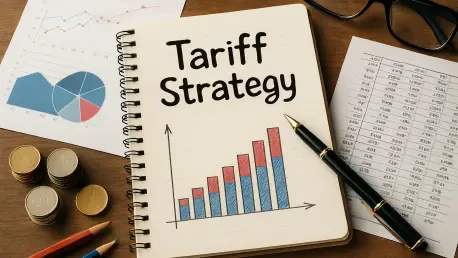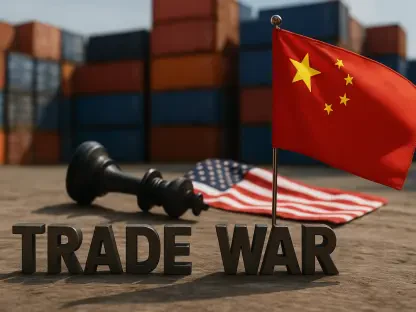In recent years, President Donald Trump’s aggressive tariff strategy has drawn both attention and controversy on the world stage. This approach predominantly involves the imposition of steep tariffs on imported goods, aiming to amplify American manufacturing and economic dominance. Despite a variety of trade deals with countries across the globe, Trump’s administration has steadily increased tariffs, shaking up traditional trade dynamics. Faced with the choice of negotiating deals or incurring significant fees for their exports, foreign nations are navigating a transformed landscape of global trade relations.
Discrepancies Between Threats and Realities
Negotiation and Tariff Reductions
One of the notable facets of Trump’s strategy is the discrepancy between initially threatened tariff rates and those ultimately enacted. Although negotiations have occasionally reduced these tariffs, the final rates often represent substantial increases from pre-Trump figures, forcing countries to adapt their strategies in dealing with the U.S. For example, Japan, regarded as one of the main partners in the Asian market, negotiated to lower tariffs on their exports but still faced higher rates than before. This scenario is mirrored by other nations aiming to mitigate the economic impact by attempting to comply with favorable U.S. terms.
Larger economies such as the United Kingdom have similarly faced increased tariffs, necessitating adept negotiation tactics to protect their economic interests. Despite sometimes reaching deals, the shadow of further tariff hikes looms, underscoring a persistent uncertainty. This discrepancy serves to highlight Trump’s use of tariffs not just as a means of economic policy but as a bargaining chip, applying pressure on countries to diminish trade barriers on American products, thereby attempting to enhance the U.S’s trade position globally.
Smaller Economies and Baseline Tariffs
Smaller economies, often lacking the leverage of larger counterparts, find themselves under added pressure when dealing with Trump’s tariff strategy. A baseline rate of 10% applies to these smaller states, revising their trading calculus as they reconsider how best to maintain economic stability. Commerce Secretary Howard Lutnick emphasized that nations opening markets to U.S. industries often receive better terms, thereby incentivizing compliance with Trump’s aggressive economic agenda. This method effectively urges smaller nations to weigh the potential benefits of adjusting their trade policies in line with U.S. expectations against the backdrop of these unavoidable tariffs.
Under this paradigm, smaller nations must strategically negotiate to sidestep potential economic pitfalls. These dynamics position Trump’s strategy as both a challenge and a catalyst for reshaping how smaller economies engage in international trade. Yet, the approach also presents ongoing challenges due to its inherent volatility, requiring these nations to remain agile and adaptive amid the potential for unexpected tariff fluctuations.
Volatility and Leverage in Trade Dynamics
Unpredictability as a Strategic Tool
Throughout Trump’s tenure, the unpredictability and volatility of imposed tariffs have served as tactical elements within international trade negotiations. By instituting unexpected demands mid-discussion, Trump maintains a significant edge over trading partners, keeping them in a constant state of adjustment. Countries like those in the European Union, while participating in varied collaborative efforts with the U.S., still face spontaneous shifts in trade agreements. This uncertainty poses substantial challenges in long-term planning, necessitating adaptive and agile responses from all involved parties.
Moreover, the unpredictability of tariff rates extends its influence to longstanding trade agreements, such as the U.S.-Mexico-Canada Trade Agreement. Despite established frameworks, renegotiations or amendments have become viable possibilities under Trump’s administration. The uncertainty keeps nations on edge, reinforcing Trump’s strategic aim to control trade narratives and preserve his authoritative bargaining power in these international trade affairs.
Consequences for Established Relationships
The ripple effects of these policies are evident as nations navigate the complexities introduced by this revised approach, seeking ways to adjust to the new norms established on the world economic stage. Such changes have raised important discussions about the balance of power in global trade.









